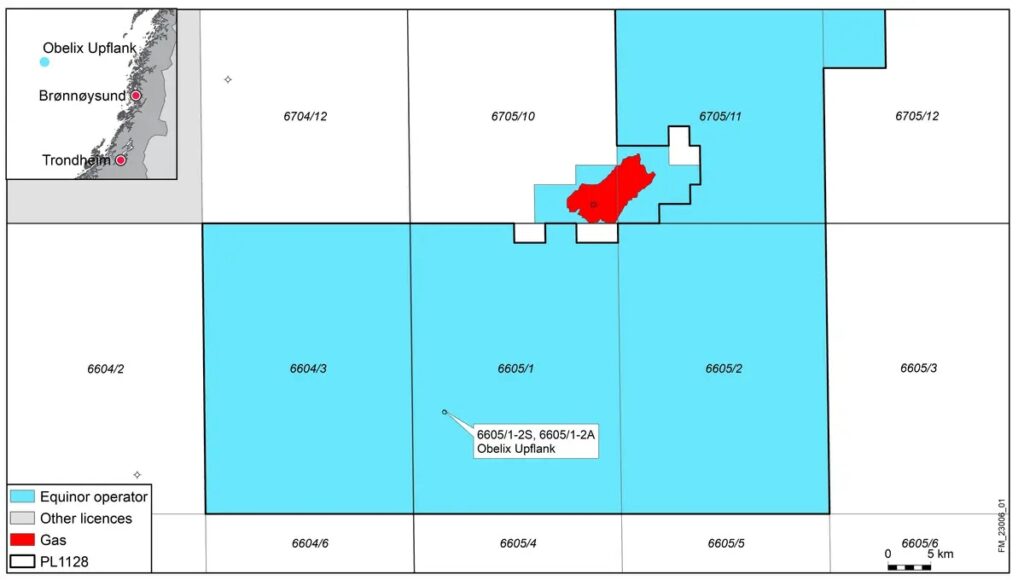Fossil Energy – Norway
Equinor, operator of the production license 1128 offshore Norway, has concluded the drilling of wildcat well 6605/1-2 S and appraisal well 6605/1-2 A and made a commercial gas discovery.

Exploration wells 6605/1-2 S&A in the Norwegian Sea were drilled by the Deepsea Stavanger drilling rig.
The Obelix Upflank discovery was made some 23 kilometres south of the Irpa gas discovery, and 350 kilometres west of Sandnessjøen.
This is the first discovery made on the Norwegian continental shelf (NCS) in 2023, and the first wells in the Equinor-operated production licence awarded in the APA award in 2020.
The objective of well 6605/1-2 S was to prove petroleum in Upper Cretaceous reservoir rocks in the Springar Formation. The objective of appraisal well 6605/1-2 A was to confirm the discovery in a downfaulted neighboring segment.
The well 6605/1-2 S encountered three sandstone layers in the Springar Formation, with moderate to good reservoir quality. The uppermost sandstone layer, about ten meters thick, was gas-bearing. In the 35-meter middle sandstone layer, a 2-meter gas column was encountered, and the gas/water contact was proven at about 3190 meters below sea level. The lowest sandstone layer was 25 meters thick and water-bearing.
The well 6605/1-2 A proved a 12-meter gas column in the uppermost sandstone layer, with moderate to good reservoir quality. No gas/water contact was encountered. The deeper sandstone layers are water-bearing.
Pressure data indicates communication both vertically between the three sandstone layers and horizontally between the two wells, in both the water and hydrocarbon zones. The total gas column proven in the two wells amounts to 29 meters.
Preliminary estimates place the size of the discovery between 2 and 11 billion standard cubic meters (Sm3) of recoverable gas. The licensees will assess further delineation of the discovery and tie-in to the Irpa field.
